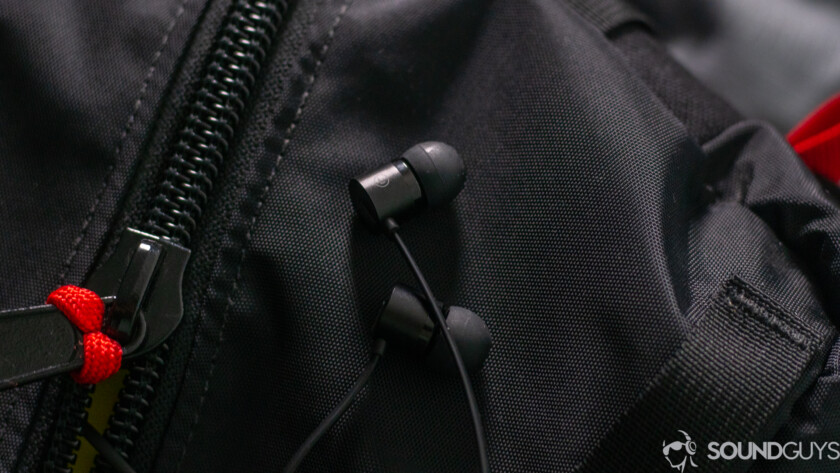
In a sea of 3D audio products and true-wireless earbuds, USB Type-C headphones were nowhere in sight at CES 2019.
This absence isn't an accident, however. Rather, it's the deafening silence of an abandoned product category. While many looked to USB-C audio as the successor to the famed physical port, the available models aren't catching on, and they don't seem to be going anywhere. Their absence at CES 2019 doesn't paint a rosy picture of their future, either. As my college professor used to say, "Sometimes what isn't seen speaks more about a work than what is."
Why USB Type-C headphones have not caught on

OnePlus' Bullets Type-C don't provide full functionality to my co-worker's Google Pixel 3XL.
In general, it takes new standards quite a while to catch on, however, USB-C was thrust into the limelight far before its time. When Apple and Google ditched their headphone jacks, it limited the pool of audio peripherals to Bluetooth, or the very young USB-C category. Perhaps with a little more time and backing from a few more serious partners this could have matured alongside its older brother the TRRS plug, but it just wasn't to be.
Headphone jack demand stable YoY as per my Twitter followers. You'd expect it to decrease, no? pic.twitter.com/Qe9Q3cGznP
— Carl Pei (@getpeid) March 15, 2018
It's especially frustrating because anyone could have seen this coming. Despite the cries of reporters and industry experts alike, nothing could stop the "ditch the headphone jack" train once Apple did it, and the post-hoc rationalizing has been a little tough to swallow. It would be at least a little understandable if all USB-C headphones worked with all USB-C ports, but that's not the case.
One of the biggest issues that companies need to navigate pertains to source and peripheral device compatibility. USB Type-C headphone cables can either be active or passive — or manifest as a dongle adapter. This inconsistency, paired with the fact that Audio Accessory Mode has yet to be universally supported, results in a barrage of compatibility issues. Hence why many users are unable to operate playback controls or use a headset's integrated microphone.
Consider OnePlus, a company that ditched the headphone jack despite its own community being vocally against the power play. Although they get the design right, its Type-C Bullets earbuds don't work on the Google Pixel 3 XL. While this isn't life-ruining — or even day-ruining — it's tough to want to buy something if you have even odds of the thing even working at all. Headphone buyers aren't used to such a problem, because for decades the analog port just worked. It didn't matter what the brand of source you were using was, the standard was, well, a standard. That's gone now.
It's not just messy software
USB Type-C headphones generally just aren't good headphones. End of story. Between the horrifically messy software and horrendously painful hardware — looking at you, Google Pixel USB earbuds — it seems odd to opt for shoddy USB Type-C headphones when cheaper, better wireless options exist.
If you don't believe me, Google the term "USB-C headphones," and see who tops the page. The SoundGuys have been covering that beat since the beginning, and the results never really got to a good place. Between objective testing and relaxing the definition of "good" a bit, the audio review site just hasn't been able to find a credible challenger to Bluetooth or analog headphones.
If CES 2019 is any indication, a headphone jack revival is possible
If USB-C audio is dead, we can probably take solace in the fact that other companies are starting to recognize that fact as well. While not many people adopted the new standard, thankfully the old one works just as well, and it's relatively cheap to re-adopt.

Huawei P30 renders reveal the inclusion of a headphone jack.
A vast majority of the audio products showcased at CES were wireless ones, be it true wireless, conventional wireless, or soundbars with wireless capabilities. Heck, there were far more wired 3.5mm headphones than USB Type-C ones. Granted, that's not saying much of anything. However, it does demonstrate pretty clearly that most consumers are still okay with the TRRS connector just fine. It wouldn't be a shock to see it come back to smartphones.
In fact, we've already seen some rumors that Sony is going to bring back the jack, and leaked renders of Huawei's upcoming P30 sports the jack. While neither company marks a seismic shift like Google or Apple would, it's an encouraging start.
How likely is the headphone jack's return?

Rather than being left without an audio port in our smartphones, it seems companies may include the headphone jack again.
It's too early to tell if the venerable headphone jack is coming back, but we're still hopeful.
Since USB Type-C headphones are on life support, the headphone jack seems more of a necessity than ever. But if it doesn't return: we're left without a feasible option for physical mobile audio ports. While Bluetooth is a decent feature, it's not going to satisfy everyone, and the wireless standard has its issues as well.
Huawei P30 renders depict a headphone jack, which seems a likely reality given the death of USB-C headphones.
Ultimately, the USB Type-C headphones endeavor was a half-baked mess of competing standards that led to missed opportunity after missed opportunity. Its untimely demise may be abrupt for some and welcomed by others, but an infant can't take over for Atlas.
Next: Best smartphones for audio
from Android Authority http://bit.ly/2AHoU0B
via IFTTT
No comments:
Post a Comment